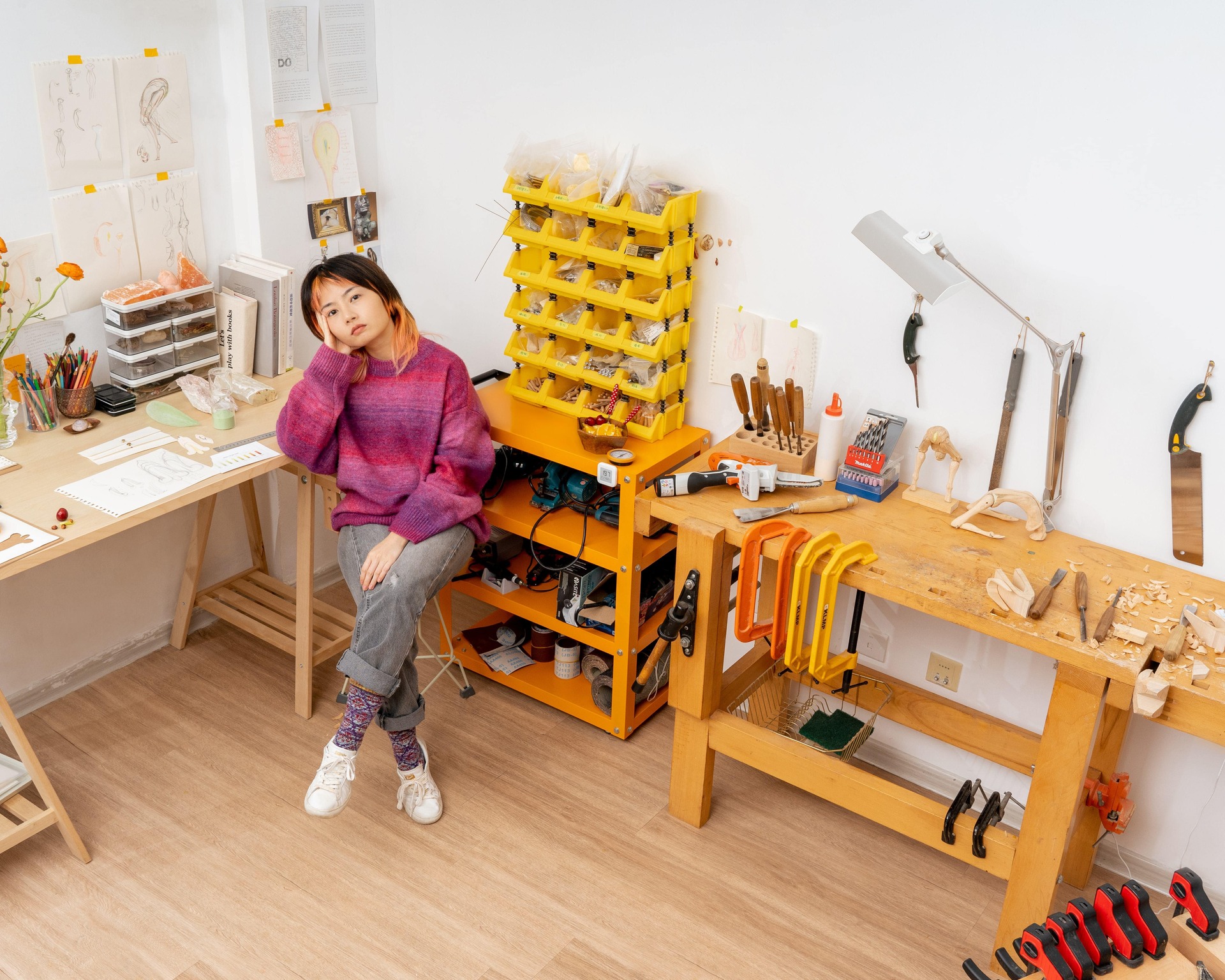
Liao Wen first captured our interest in 2019 through her inaugural project, The Flesh Store (肉 铺). This exhibition delved into the intricate connection between the aesthetic portrayal of the human body, its engagement with society, and the nuanced interplay of pain, vulnerability, and its capacity to provoke empowerment and intellectual reflection.
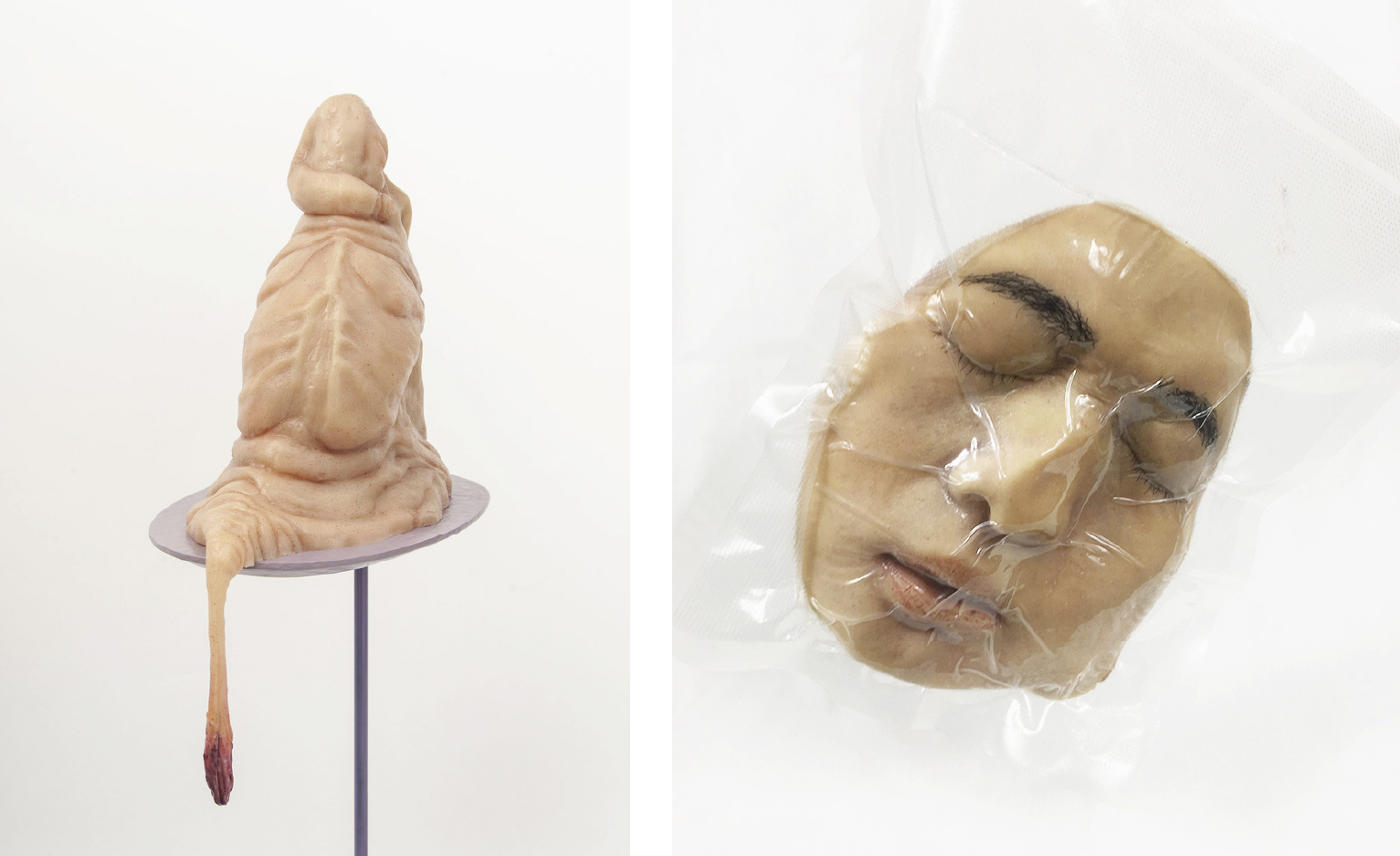
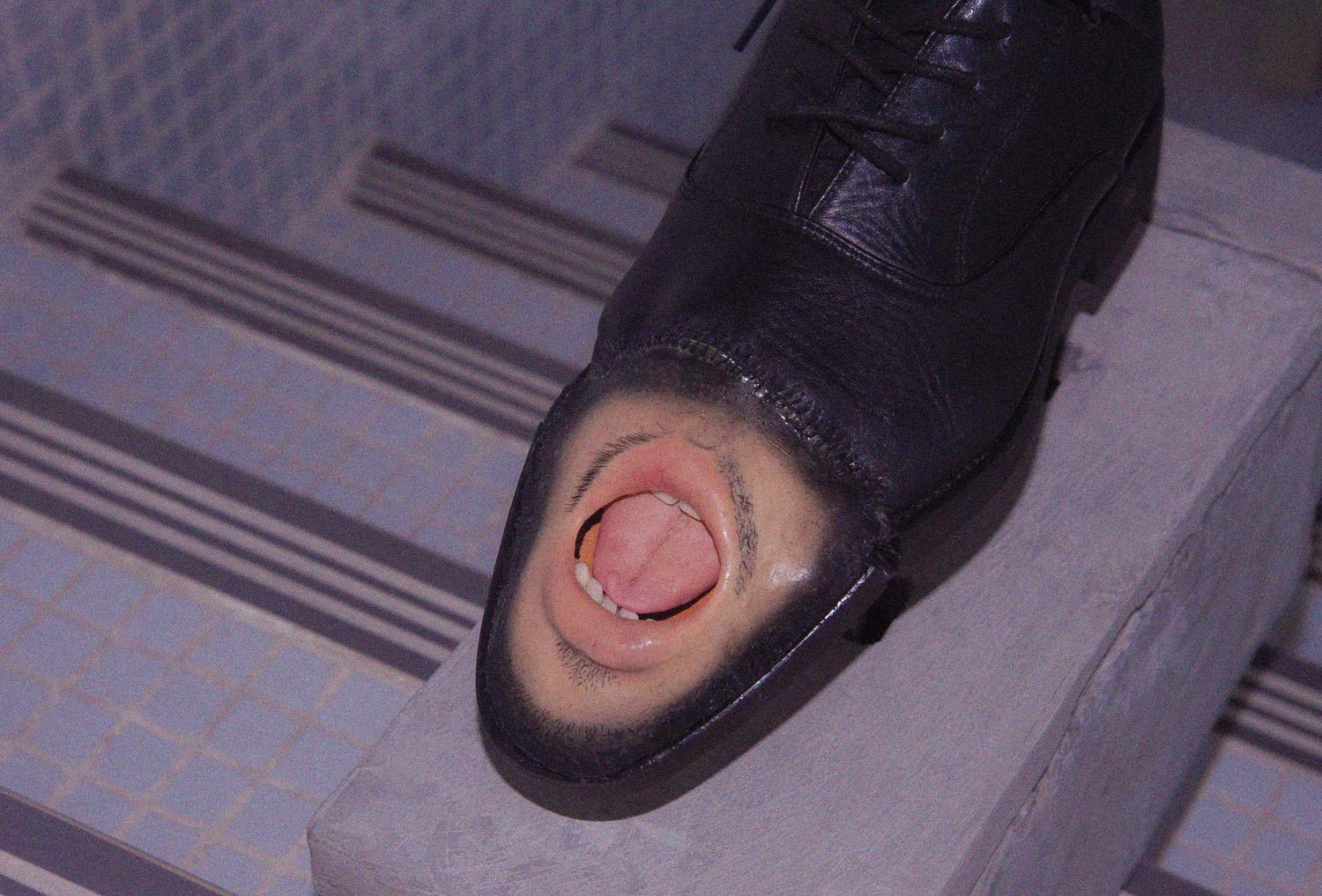
Since 2019, Liao Wen has embarked on a journey of numerous ongoing projects, with one of the most comprehensive ones being Almost Collapsing Bodies (临界之躯). This project took root in 2020 and continues to evolve with the addition of new original sculptures and the development of new perspectives that shape its overarching narrative.
The first sculpture in the series, Don’t Leave (2020), represents the artist’s inaugural fusion of puppetry and sculpture. The gracefully curved spine exhibits a forward inclination, juxtaposed by the elongated neck that counteracts the forward momentum. Notably, the silicon segment suspended at the front carries substantial weight relative to the entire structure. This feature not only accentuates the inclination forward but also evokes a palpable sense of gravitational pull. Don’t Leave serves as a proclamation, embodying the resilience to withstand external pressures. It symbolizes the defiance against collapse even in the face of formidable forces, conveying a resolute determination to persevere.
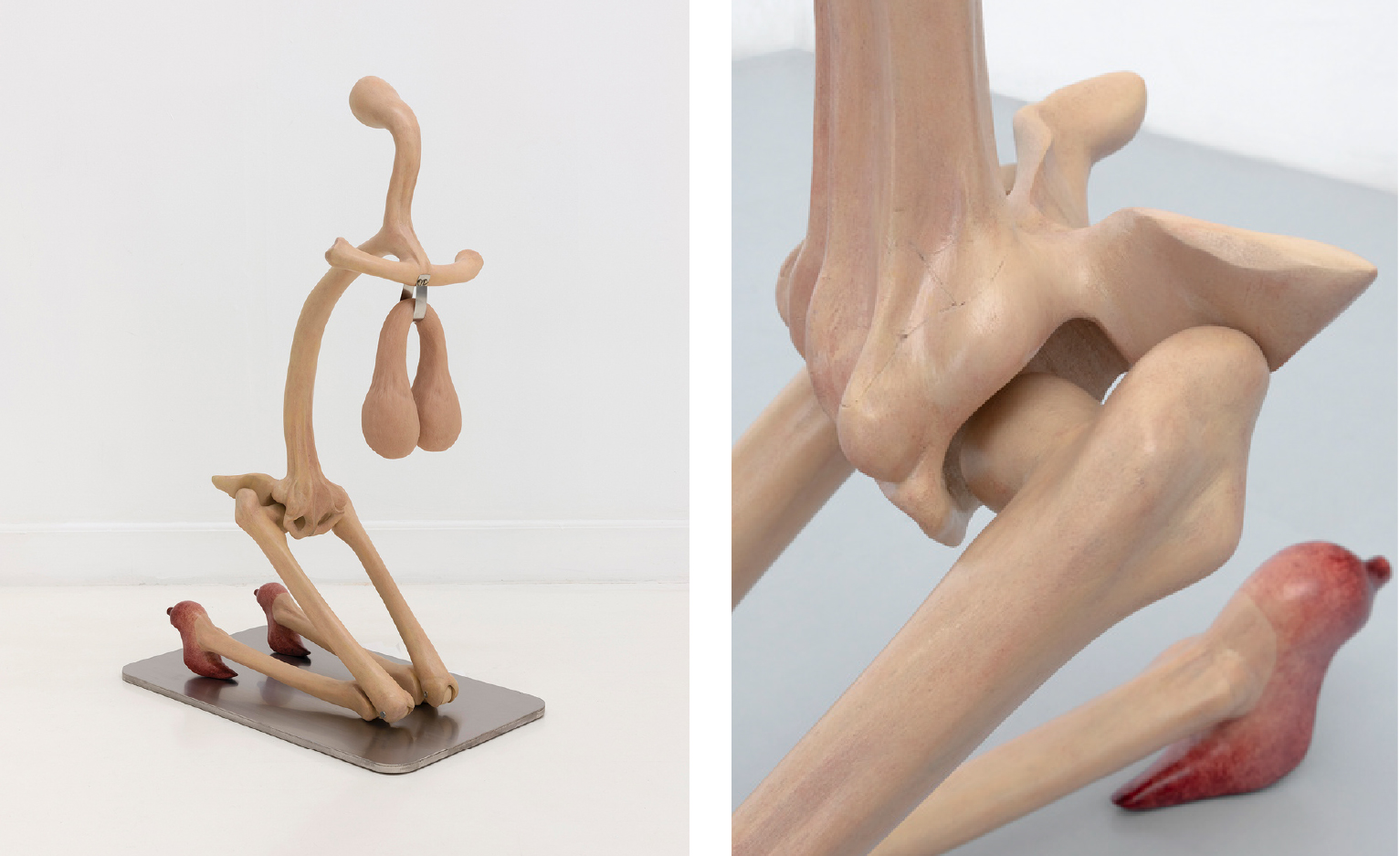
Almost hysterical (2020) attempts to depict a subtle state where the extreme emotion is almost uncontrollable. The form of arch – the torso of this work – is Inspired by a clinical graphite depicting the hysteria syndrome first described by Richer Paul, an acknowledged anatomist in the late 19th century. The head of the piece looks like a screaming tonsil, while the legs fold to the extreme with their tiptoes slightly touching the ground. The neck and hip are supported by stainless steel railing. The tiny tiptoes provide just the right amount of support from the ground for the piece to stand on its own. However, given the extreme bend of the torso, such balance is fragile and can easily fall apart.
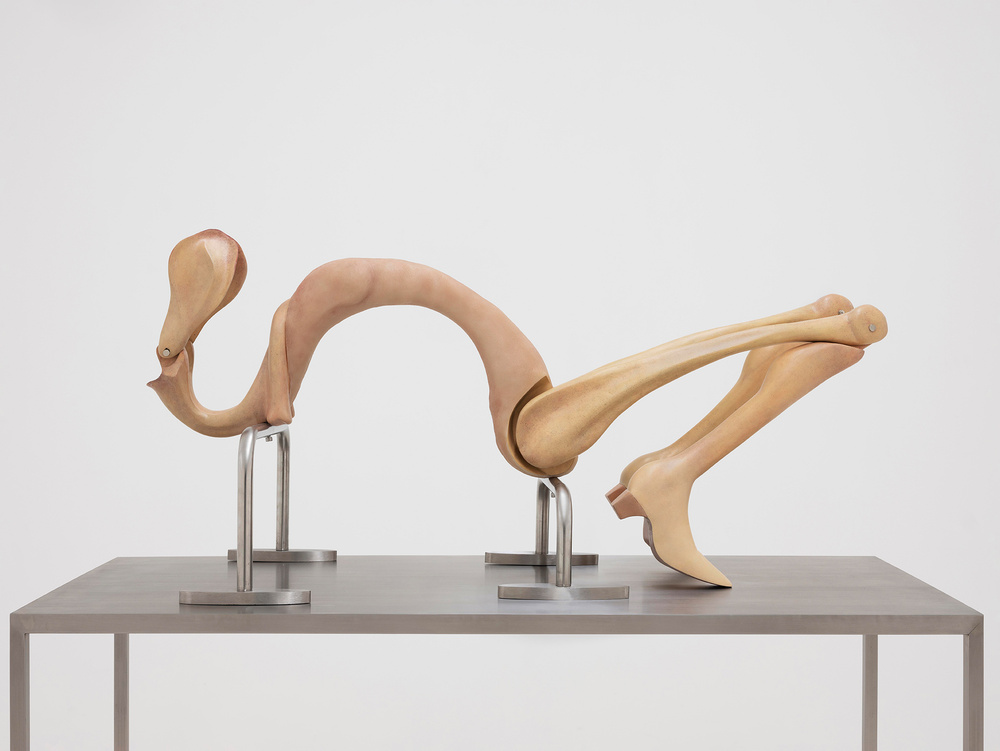
The third installment within the Almost Collapsing Bodies series, titled Hesitation (2020) presents a slender female form. The contorted torso and limbs give rise to an architectural space intricately connected to the earth below. Safeguarded and cradled by a sinewy appendage, a flesh-toned vacuum ballonet hangs suspended within the heart of the void. The distinctive, ruby-stone-tipped tendril hints at impending bloodshed and violence, while a delicate antenna hovers just above the surface of the ballonet, poised as if on the verge of piercing through. This composition captures a suspended moment in time when individuals confront unfamiliar ideas or situations, uncertain about whether to embrace them or let them slip away.
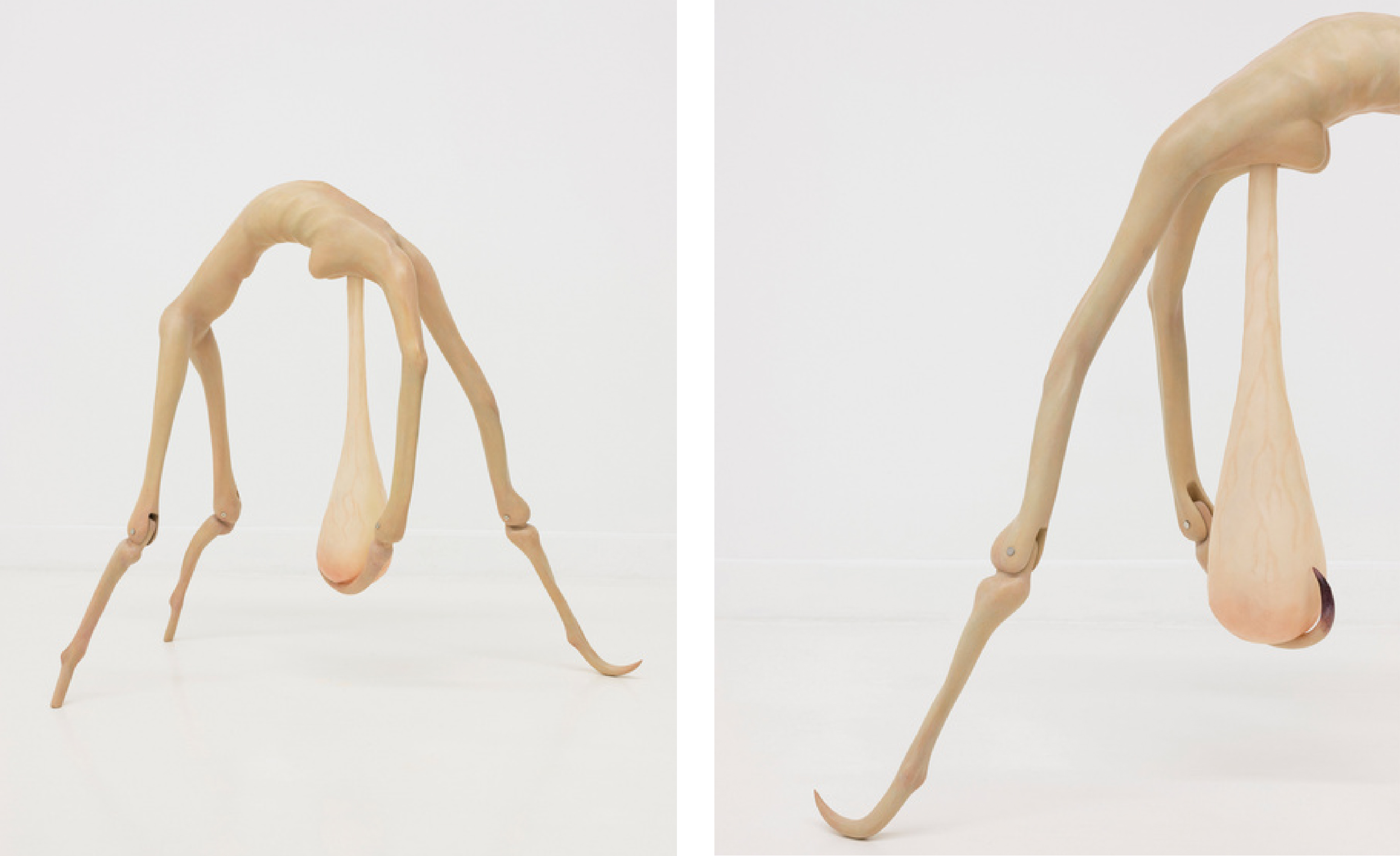
Liao Wen’s Resist (2022) finds its inspiration in her deep empathy and concern for a close friend who has endured years of suffering due to depression. The central elements of the piece draw their shape from Ruperts’ tears, a classic variety of glass characterized by a robust head and an exceedingly fragile tail. These delicate glass tails are positioned in such proximity to the floor that the curved wooden body appears as if it’s exerting its utmost effort to shield them from shattering.
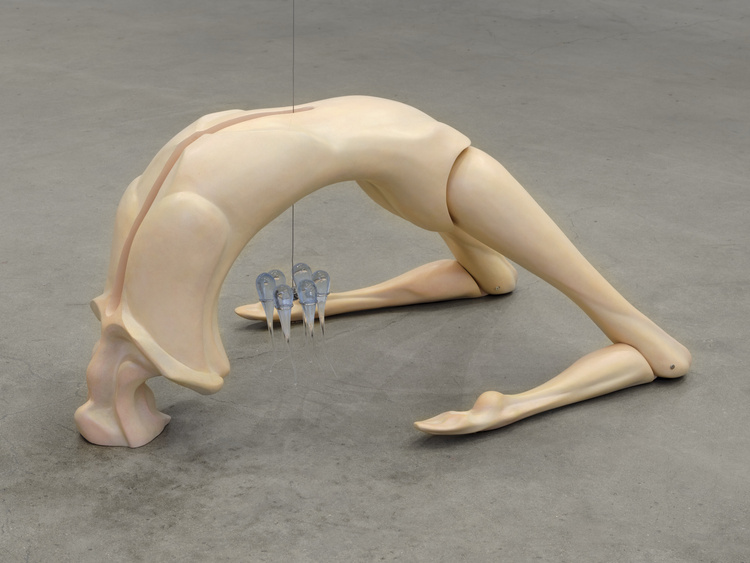
The following addition to the series, Stare (2022), portrays a figure meticulously inspecting her own body. Balancing on her tiptoes, she scrutinizes her excretion, imbuing the scene with an unusual sense of closeness. The viewer’s gaze locks onto her vacant, upward-facing eyes. This posture could be linked to a mundane yet concealed moment, reminiscent of a birthing stance, or it may be interpreted as possessing elements of eroticism or even defiance. By eliciting a spectrum of emotions, Liao Wen encourages viewers to reconsider when the human body transitions from being a natural organism to inevitably conforming to societal norms and values.
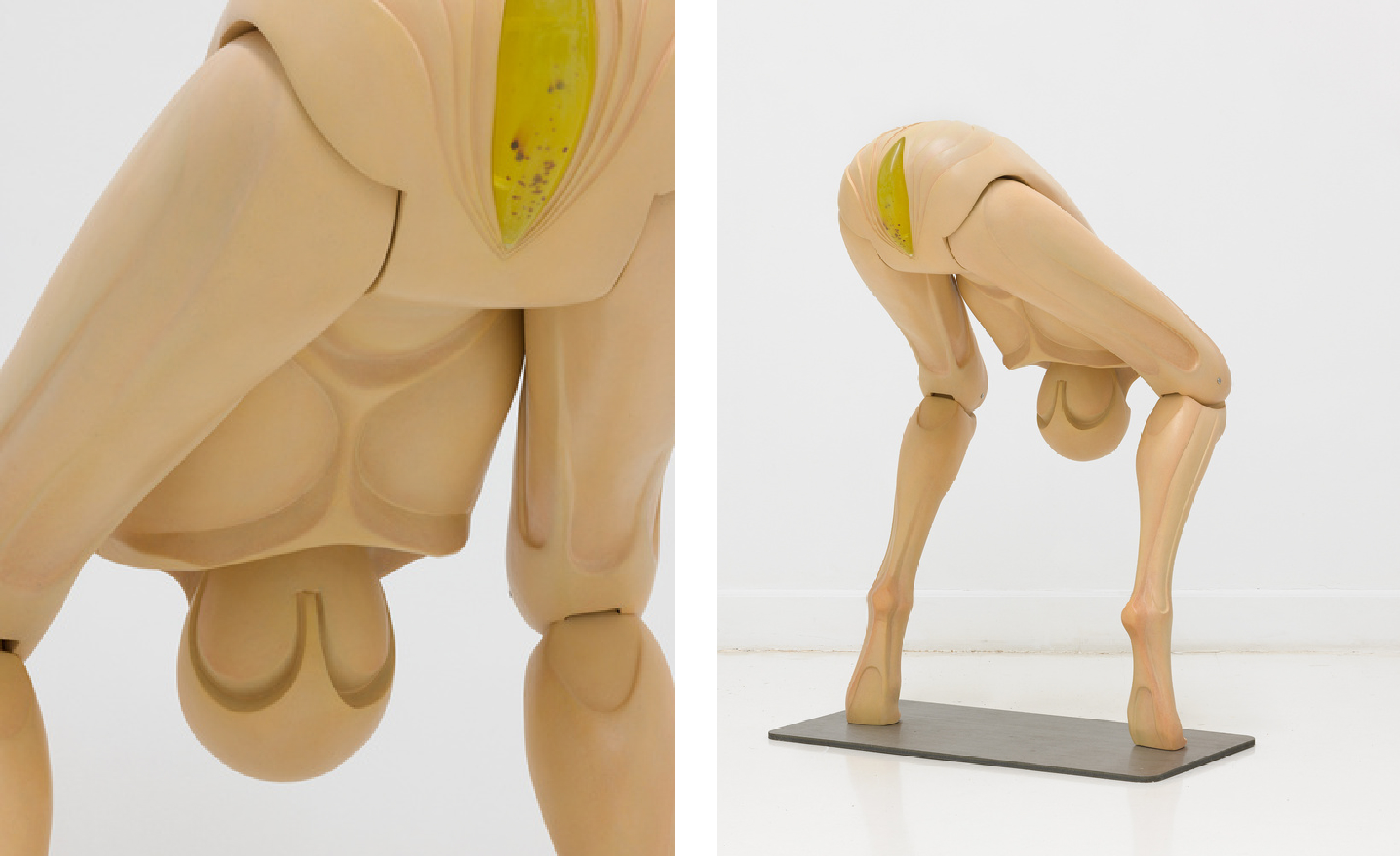
In the most recent, and as of now, final installment in the series titled Headwind (2023), the depicted figure fiercely battles an unseen force that appears to be subduing, contorting, and distorting their body. Their head and limbs deviate significantly from the natural axis of their form, instilling a palpable sense of dynamic motion.The piece also beckon viewers to ponder a metaphysical question: How does one sustain stability and equilibrium amid the turmoil of radical movement and transformation?
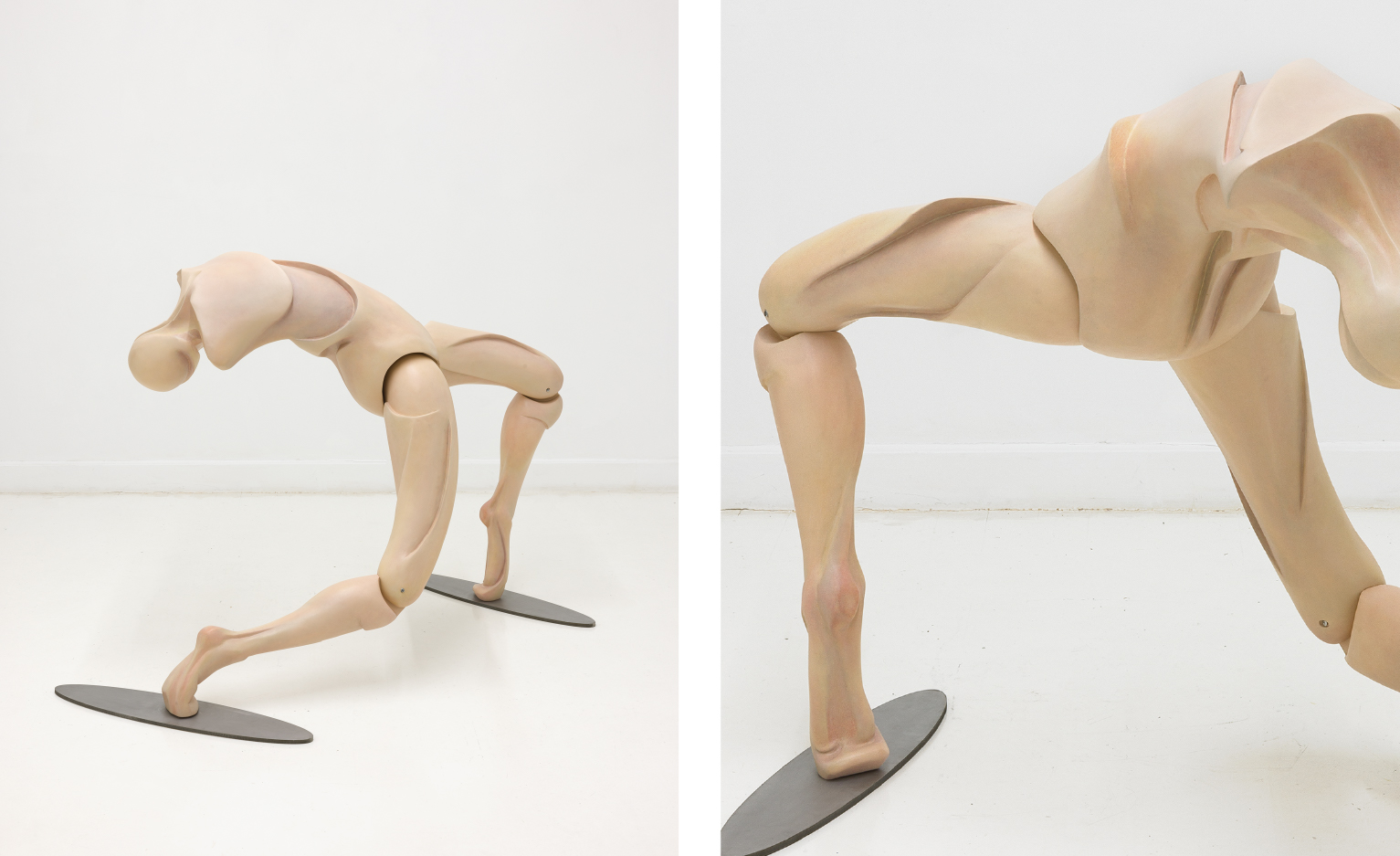
In addition to her involvement in the Almost Collapsing Bodies series, Liao Wen has simultaneously embarked on more ongoing projects, one of them is Rites of Seasons 节律之仪 (2021 –).The project delve into historic rituals, particularly those within women’s communities. Through artistic interpretations of rituals encompassing reproduction, witchcraft, symbols, and myths, Liao Wen seeks to unearth the origins of gender-related issues and amplify the long-suppressed voices within these narratives.
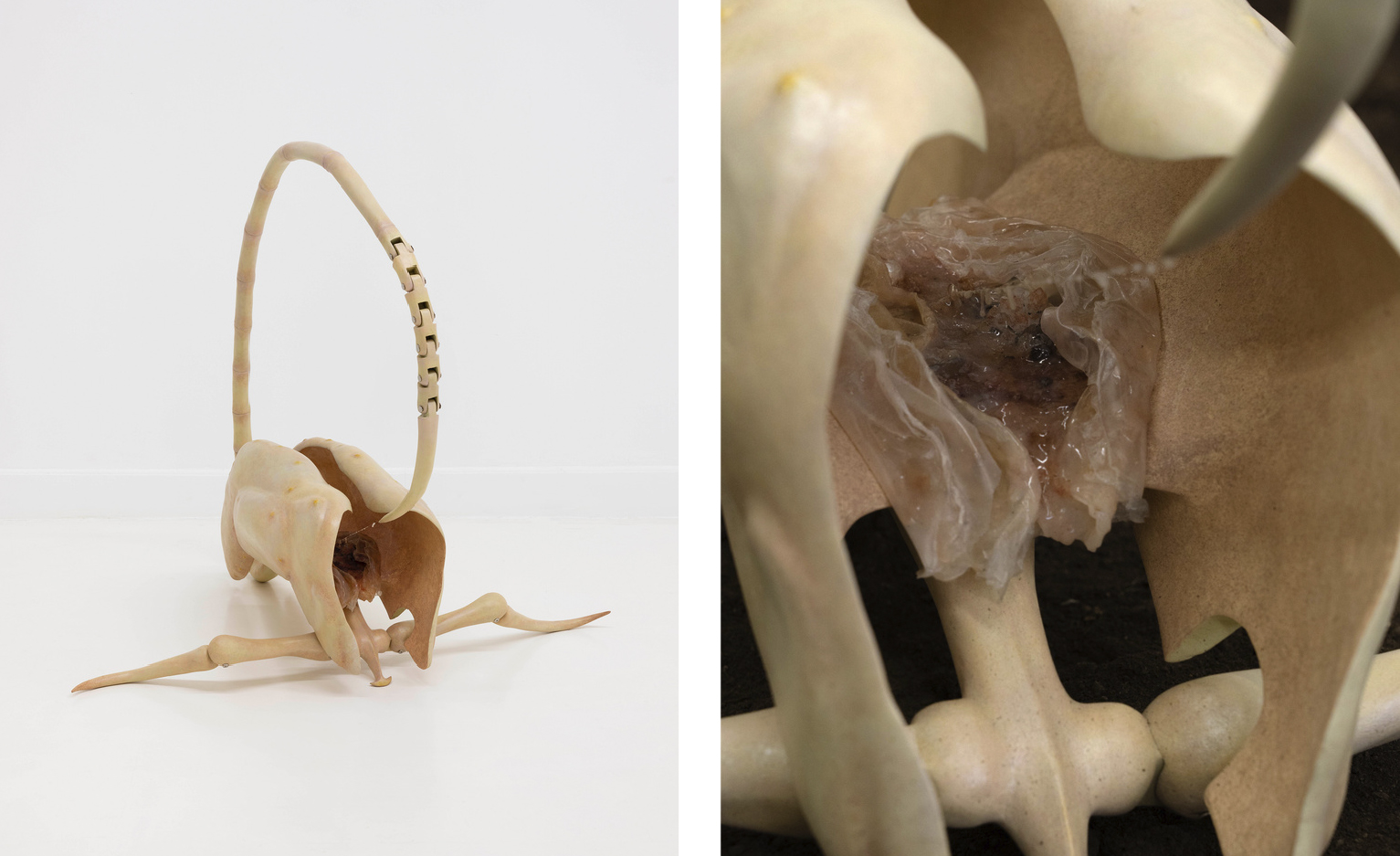
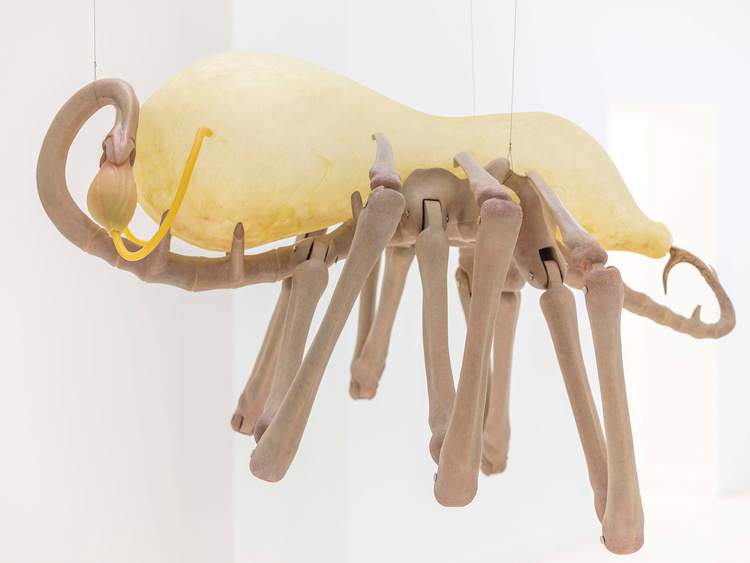
In 2022, Liao Wen initiated yet another project titled Sensation 感知 (2022–). Within this series, Liao Wen brings often overlooked bodily functions, like breathing, excretion, and vomiting, to life through her evocative sculptural expressions. Contrasting with the direct portrayal of bodily pain in “The Flesh Store,” the “Sensation” series exudes an airy and whimsical tone.
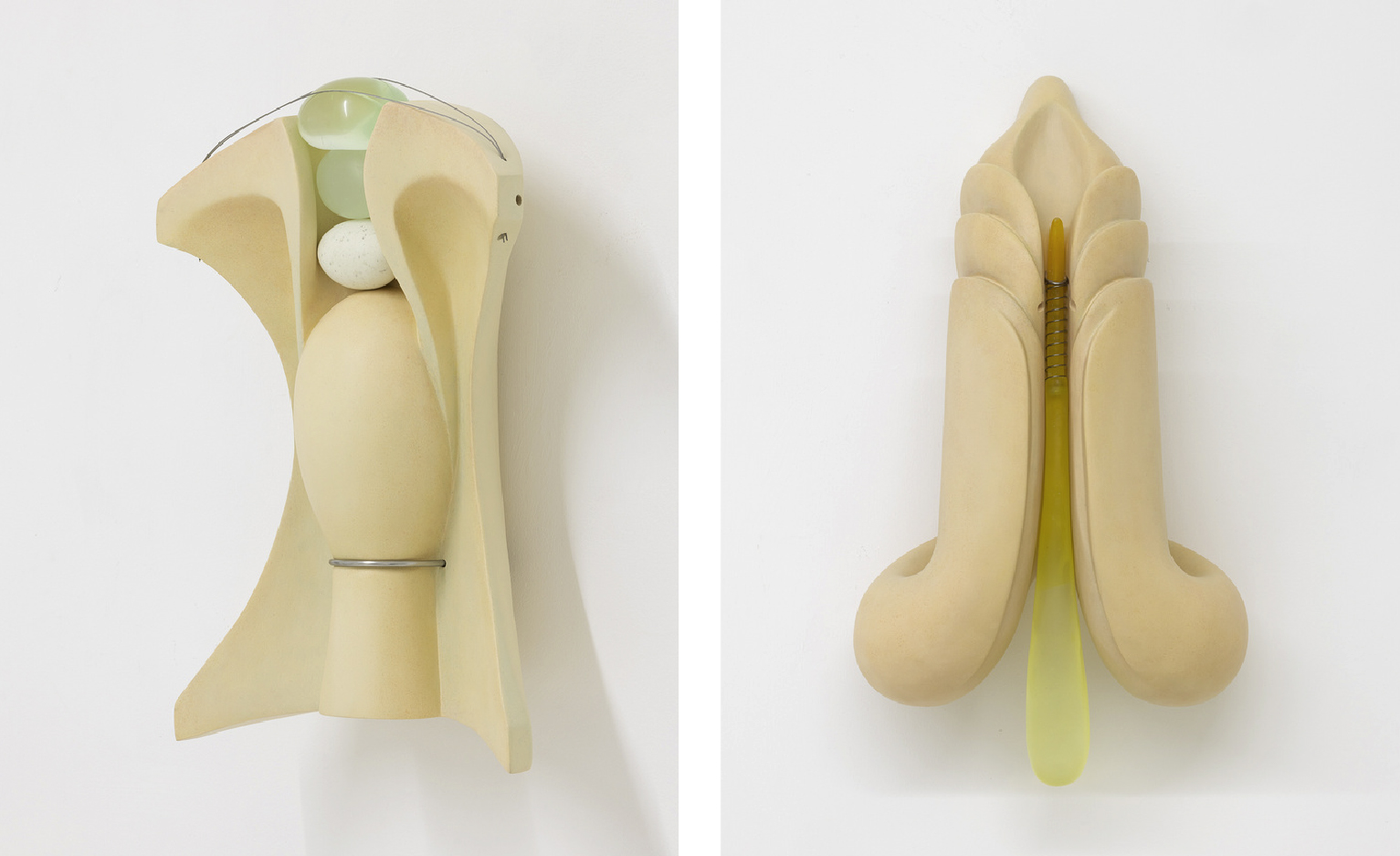
Liao Wen
Born in 1994, Chengdu, China.
Currently lives and works in Hong Kong.
09.09.2023
Liao Wen’s artistic practice focuses on sculptures, primarily working with wood and silicone.
Drawing inspiration from her early years of crafting marionettes, Liao’s sculptures focus on the transmission and balance of force between joints, depicting momentary tension of the body and revealing the unsettling life experience of people at liminal stages.
Anchored in her personal corporeal awareness and encounters, Liao’s artistic endeavors mirror the ceaselessly changing conditions and malleable sense of self in contexts such as public spheres, collective ceremonies, and mythologies.
Liao Wen graduated from the Printmaking department of Sichuan Fine Arts Institute in 2016, and received a Master’s degree in Experimental Art from the Central Academy of Fine Arts China in 2019.